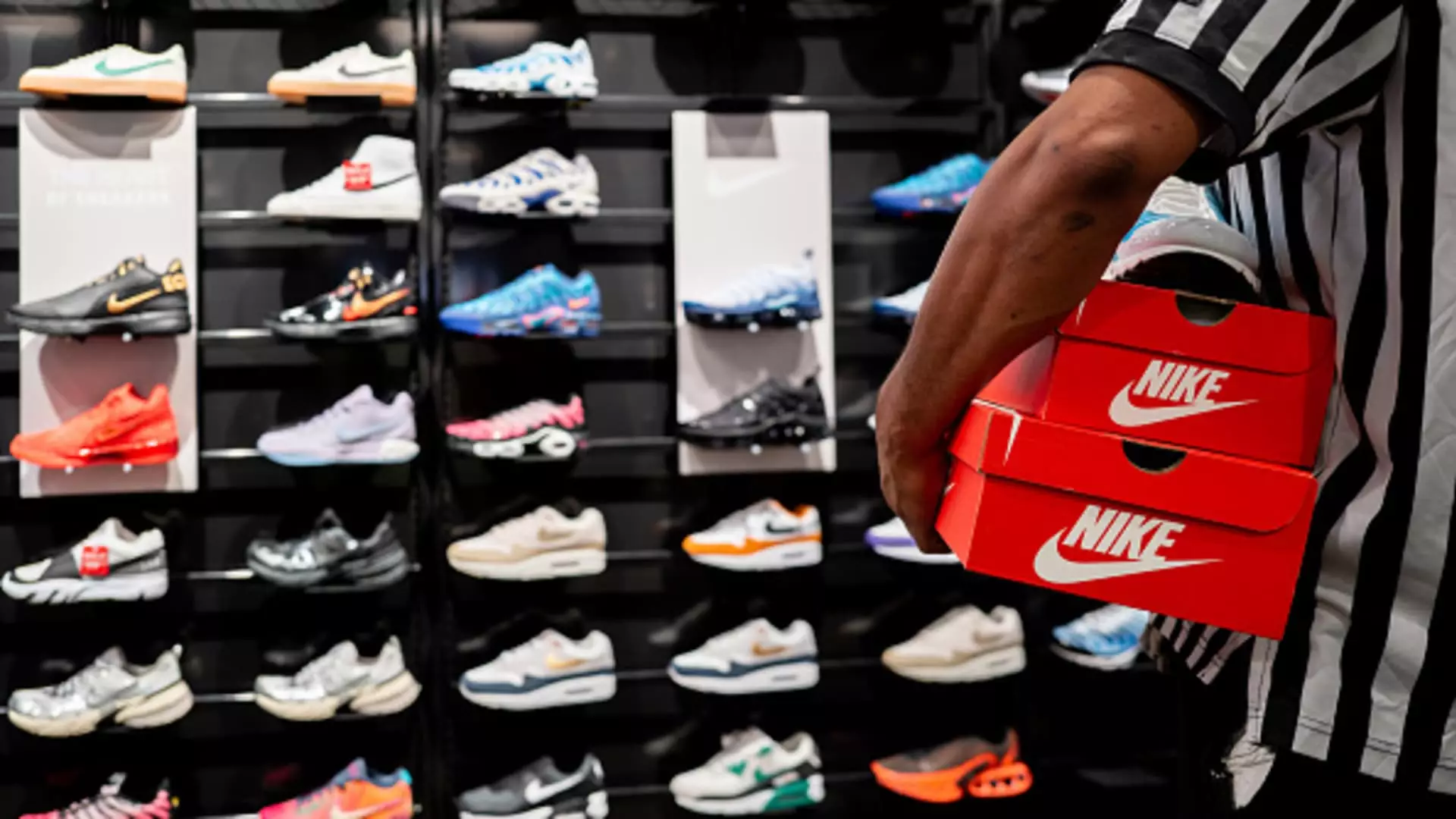As Nike prepares to release its quarterly earnings report this Tuesday, investors and analysts alike are bracing themselves for what is anticipated to be a disappointing set of results. According to consensus estimates from LSEG, the company could report earnings per share of just 52 cents on revenues of $11.65 billion, reflecting a staggering projected decline of 10% in sales from the same period last year and a profit drop of nearly 45%. This anticipated downturn underscores a critical moment for Nike, a brand synonymous with athletic excellence, yet now facing a significant crossroad.
The anticipation surrounding Nike’s earnings is further complicated by the recent announcement of CEO John Donahoe’s impending departure. Donahoe’s resignation comes on the heels of a year riddled with criticisms regarding the company’s innovation strategies and its market performance. While under his leadership, annual sales grew more than 31%, much of this growth stemmed from established product lines like Air Force 1s and Air Jordan 1s rather than new groundbreaking innovations. This has led analysts to question whether the brand is losing its edge in a rapidly evolving sneaker market.
Elliott Hill, a longtime Nike veteran and former executive, has been appointed as Donahoe’s successor, with his official start date set for October 14. Hill’s appointment signals a shift in strategy, perhaps aiming to rejuvenate innovation within the company while restoring crucial relationships with wholesale partners from whom Nike has distanced itself in recent years. Observers and investors will be closely monitoring Hill’s approach during the upcoming earnings call, eager for insights into how he plans to steer Nike into its next phase amid market challenges.
Over recent quarters, Nike has acknowledged that it must improve its innovation pipeline and repair its ties with wholesalers. The growing dominance of online retail has prompted a shift in focus toward direct consumer sales, but this could come at the expense of partnerships that have historically bolstered the brand’s visibility. The challenge for Hill will be not only to revive Nike’s innovation prowess but also to strike a balance between direct sales and wholesaler relationships that have been neglected.
The declining demand for athletic footwear in the U.S. further complicates matters. With projections for footwear sales indicating only a 2% increase this year, the market is far from vibrant. This stagnation presents Nike with a critical challenge, especially since consumer spending on discretionary items like new sneakers remains sluggish. These market dynamics necessitate a strategy that re-engages consumers while revitalizing the brand’s offerings.
Another pressure point is Nike’s performance in China, its third-largest revenue market. The economic landscape there has been turbulent, recently prompting Nike to issue a warning about a “softer outlook.” However, recent stimulus measures from China’s central bank could provide a much-needed boost to the region’s economy, and perhaps, to Nike’s sales in the medium term.
While Nike’s first fiscal quarter might include results from before these stimulus efforts, it will be crucial for Hill and his team to interpret these developments in a way that signals optimism or caution for investors. Evolving market conditions in China often serve as a barometer for broader economic health in the region, making this a critical focus area when exploring Nike’s prospects.
As Nike braces for yet another difficult earnings report, the question looms: can the new leadership pivot the company into a more innovative and profitable direction? Hill’s appointment has instilled a glimmer of hope, given his extensive experience. However, restoring consumer confidence and revitalizing the brand’s engagement with wholesale partners must be immediate priorities. While outcomes remain uncertain, the upcoming earnings report might provide the first tangible insights into Nike’s future under new leadership and the company’s strategy to navigate an evolving marketplace. Investors will surely be watching closely, waiting for signs of potential recovery or ongoing challenges in the brand’s longtime hold on the sneaker industry.

Leave a Reply